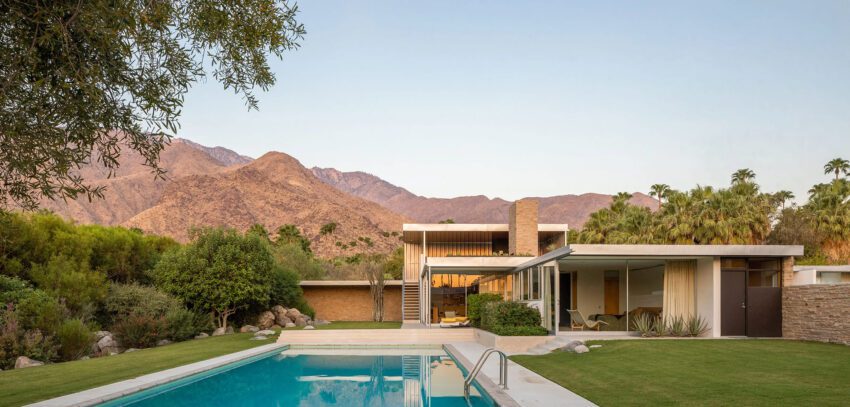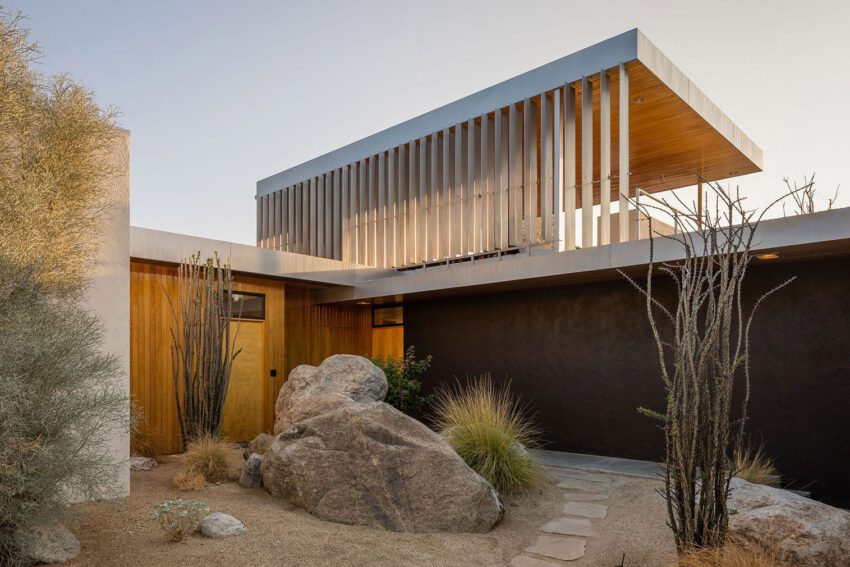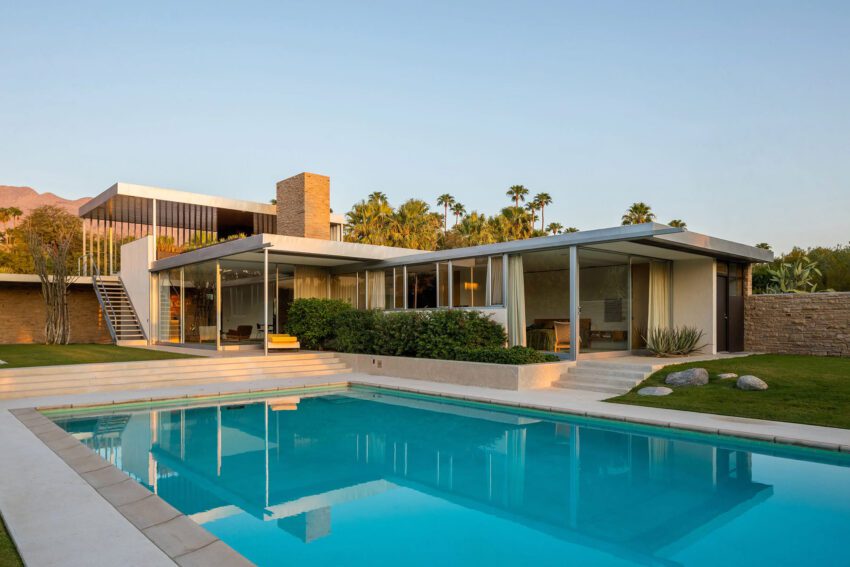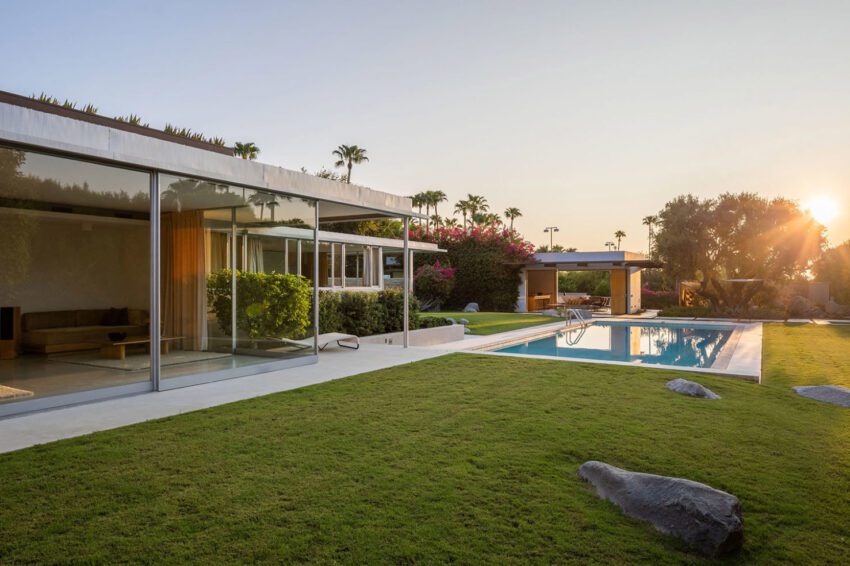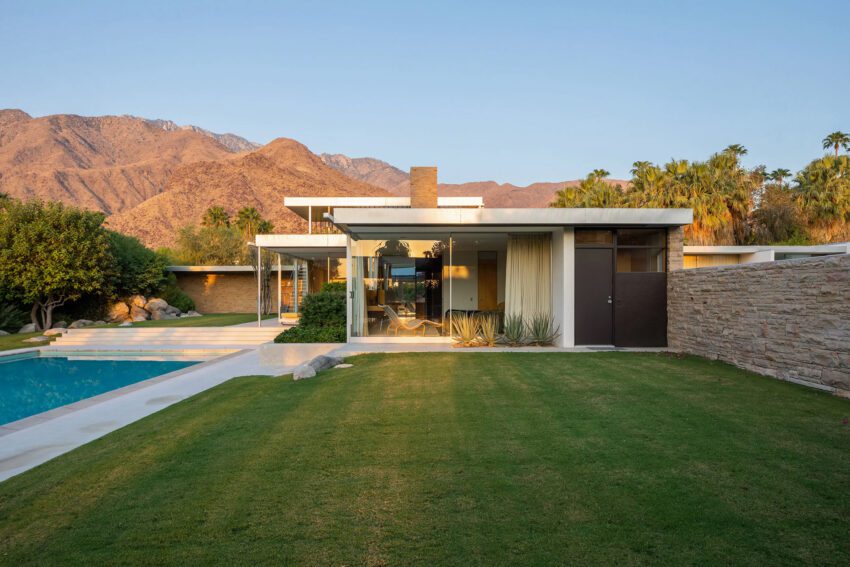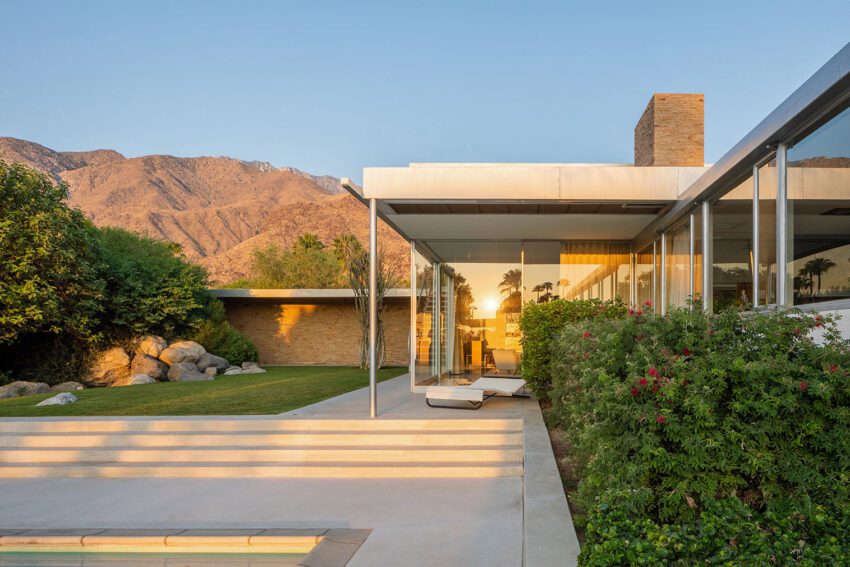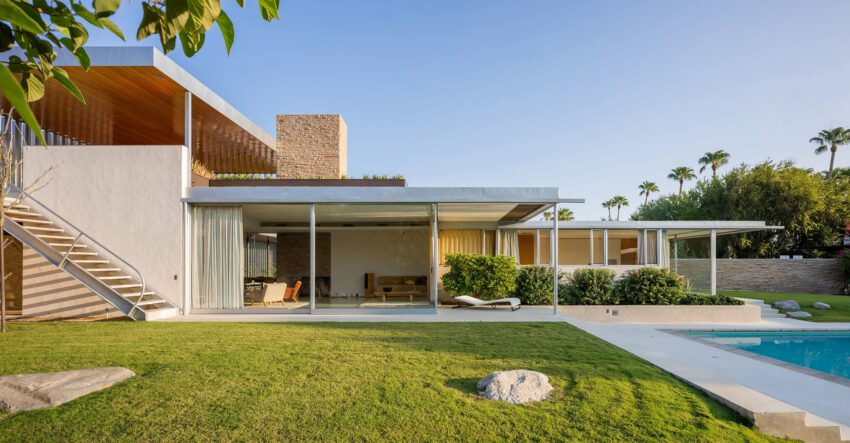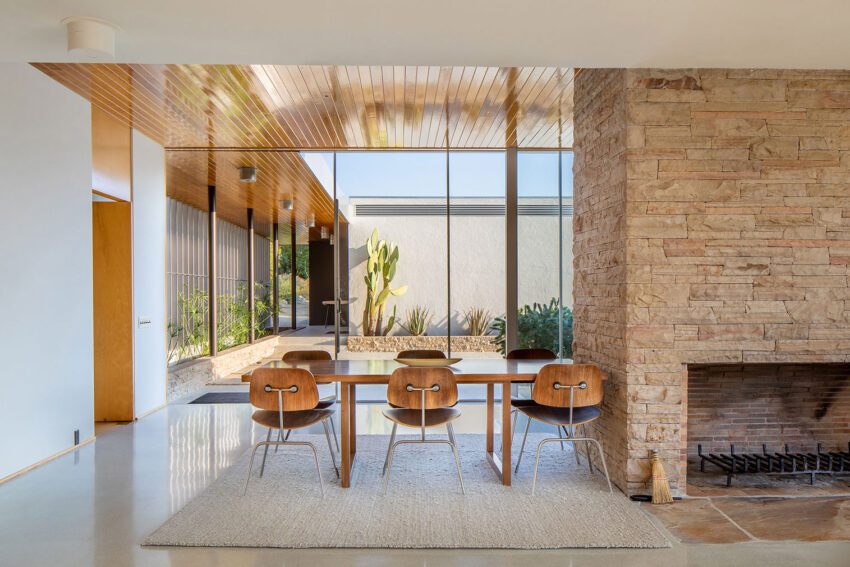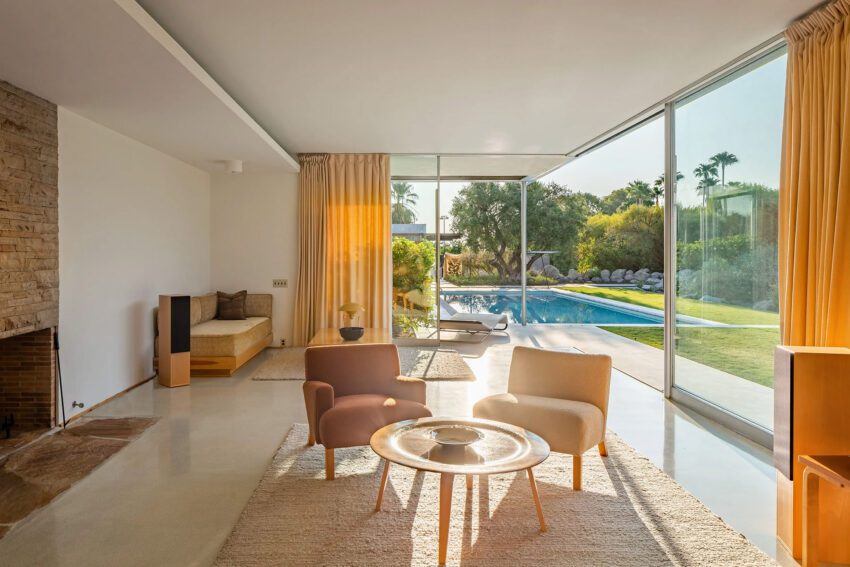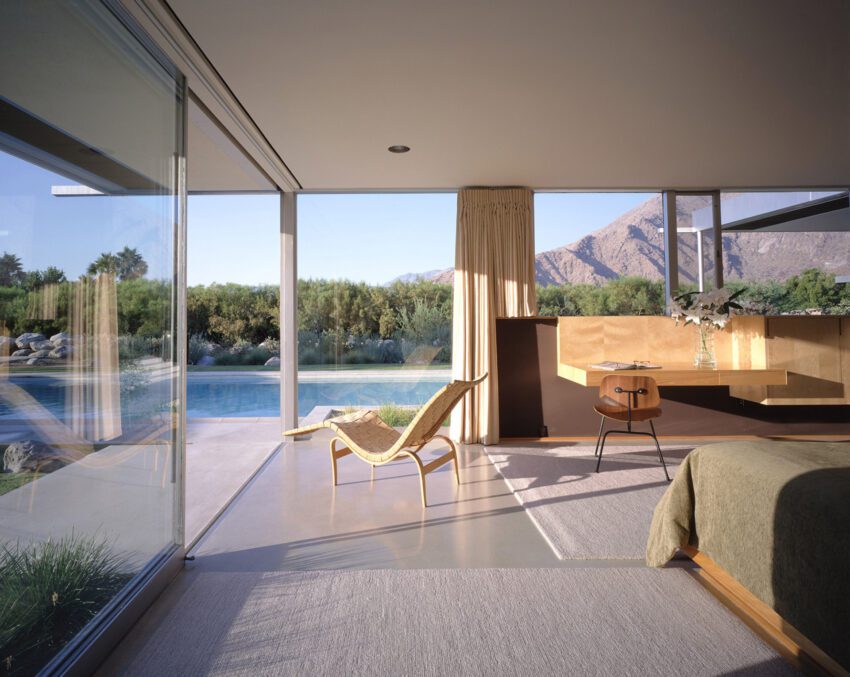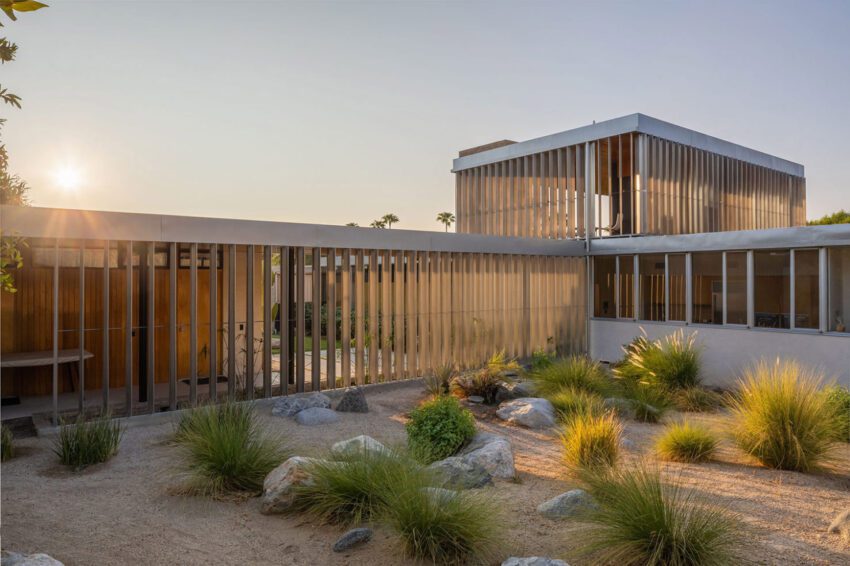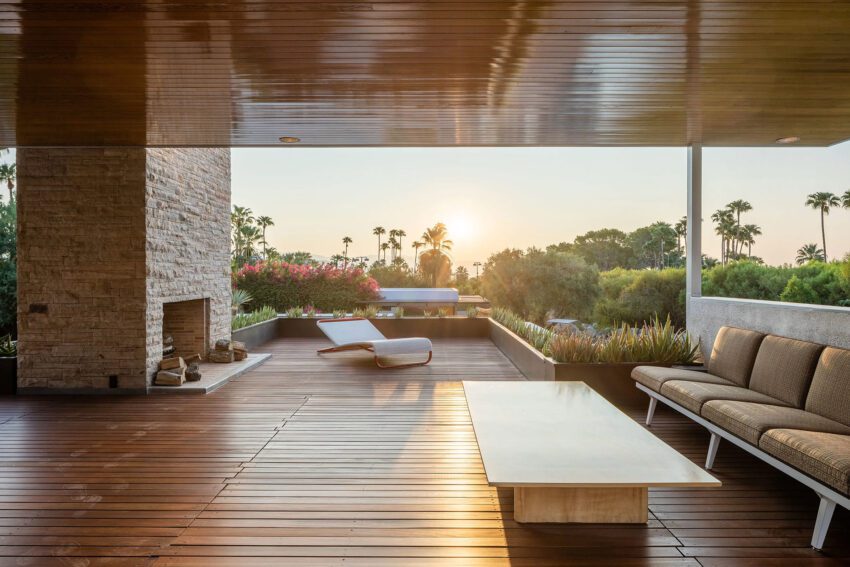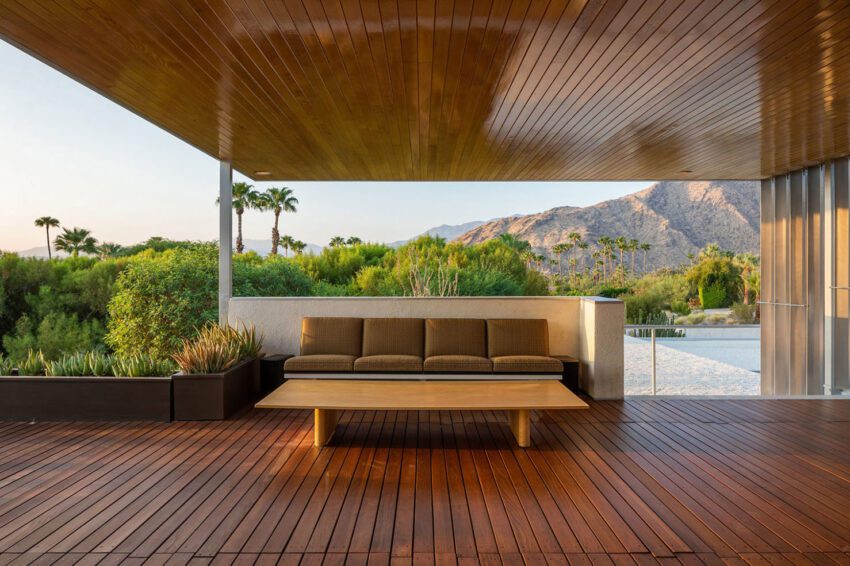Richard Neutra, an emblematic figure of 20th-century Architecture, excelled in blending technology, aesthetics, and the nuances of the natural environment into his designs. Among his illustrious works, the Kaufmann House in Palm Springs, California, is the quintessential example of his approach to modernist architecture.
Constructed in 1946, this residence was designed for Edgar J. Kaufmann, a discerning client known for patronizing exceptional architectural works, including Frank Lloyd Wright’s Fallingwater. Neutra’s design for the Kaufmann House epitomizes the ideals of modernism with its clean lines, integration with the landscape, and innovative use of materials, offering a serene yet functional living space that blurs the boundaries between indoor and outdoor living.
Kaufmann Desert House Technical Information
- Architects: Richard Neutra
- Location: Palm Springs, California, USA
- Topics: Modernism, Palms Springs Architecture
- Area: 3,162 ft2 | 294 m2
- Project Year: 1946
- Photographs: © Daniel Solomon
I love to feel a landscape with my bare hands. My work speaks for me.
– Richard Neutra 1
Kaufmann Desert House Photographs
Historical Context
The Kaufmann House was designed and built when American architecture was undergoing significant transformation. The mid-20th century marked the rise of the International Style, characterized by minimalism, open floor plans, and a harmonious blend of aesthetic simplicity and functionalism. Edgar J. Kaufmann, a prominent Pittsburgh department store owner, was deeply embedded in the architectural innovations of his time. Having previously commissioned Frank Lloyd Wright to create the iconic Fallingwater in Pennsylvania, Kaufmann’s collaboration with Richard Neutra signified a pivot towards the burgeoning modernist movement on the West Coast.
Richard Neutra, a Vienna-born architect, brought a unique blend of European modernism and Californian innovation to his projects. By the time Kaufmann approached him, Neutra had already established himself as a pioneer in modernist architecture, known for his meticulous attention to detail and his philosophy of “biorealism,” which emphasized the health and wellbeing of the occupants through design. The collaboration between the client and architect was grounded in a mutual appreciation for cutting-edge design and technological advancement, setting the stage for creating a landmark in modernist architecture.
Architectural Design
The Kaufmann House is celebrated for its distinctive design, which masterfully integrates the building with its desert surroundings while maintaining a functional elegance. The house is structured as a series of horizontal planes that seem to float against the rugged backdrop of the San Jacinto Mountains. The floor plan is expansive and open, typical of Neutra’s work, promoting a seamless flow between the interior and exterior spaces.
Key architectural features of the Kaufmann House include its flat, extending rooflines that provide shade and cooling in the desert heat and its expansive glass walls, which dissolve the barriers between indoors and the natural world outside. The use of sliding glass doors and moveable wall panels allows the living spaces to be entirely open to the outdoors, a revolutionary concept emphasizing the therapeutic benefits of living in close contact with nature.
Material choices in the Kaufmann House also reflect Neutra’s innovative approach to architecture. He employed lightweight steel for the framework, which allowed for slender yet strong supports, and used native stone and glass extensively to enhance the connection to the environment. The integration of these materials was not only aesthetically striking but also functionally significant, aiding in the thermal comfort of the residence through passive cooling techniques that were ahead of their time.
Through its thoughtful design and integration with the landscape, the Kaufmann House exemplifies Neutra’s ability to create environments that reflect their owners’ personalities and are responsive to their natural surroundings.
Photographic Impact
The Kaufmann House achieved iconic status through its architectural innovation and the lens of Julius Shulman, one of the most influential architectural photographers of the 20th century. Shulman’s photographs of the house, particularly the striking image taken at twilight with the interior lit and the pool reflecting the house and sky, have become defining images of modernist architecture. These photographs do more than merely document the structure; they encapsulate Neutra’s vision of blending architecture with its environment, creating a visual narrative that communicates the essence of modernism to a global audience. Shulman’s ability to capture the elegance and tranquil beauty of the Kaufmann House helped cement its place in architectural history and inspired a generation of architects and designers to embrace the principles of modernism.
Conservation and Legacy
Over the decades, the Kaufmann House has undergone several changes in ownership, each leaving its mark on the property. By the 1990s, the house had strayed from Neutra’s original vision, altered by renovations that did not respect the house’s architectural integrity. The turning point came when the house was purchased by new owners who were committed to restoring it to its original glory. They enlisted the help of Los Angeles-based architecture firm Marmol Radziner + Associates, known for their expertise in mid-century modern restoration. The restoration project was meticulous, involving extensive research and careful preservation efforts, including recreating missing elements and removing additions inconsistent with Neutra’s design. This restoration not only brought back the physical attributes of Neutra’s design but also revived the spirit of the house as a masterpiece of mid-century modern architecture.
Cultural and Architectural Influence
The influence of the Kaufmann House extends beyond its immediate visual and spatial attributes; it has permeated various realms of culture and design. The house has been featured in numerous films, advertisements, and fashion shoots, each time serving as a symbol of stylish modern living and the seamless integration of architecture and nature. Its representation in popular media has played a pivotal role in shaping public perceptions of modernist architecture, portraying it as an ideal of sophistication and modern American lifestyle. Its principles of indoor-outdoor living, environmental responsiveness, and minimalist aesthetics have been echoed in contemporary architectural practices, influencing new generations to value sustainability and harmony with the natural environment in their designs.
Kaufmann Desert House Plans
Kaufmann Desert House Image Gallery
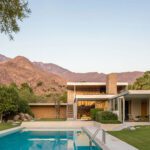
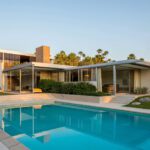




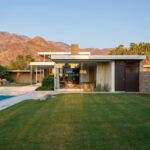
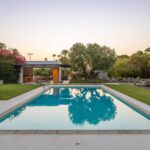


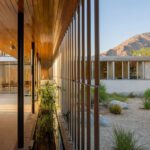

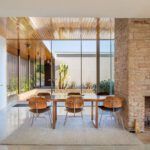
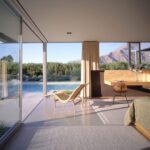
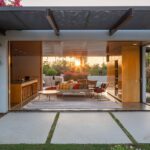
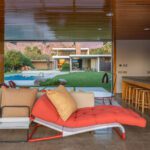
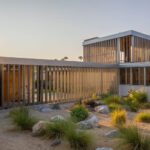

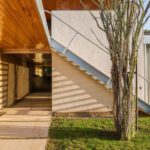
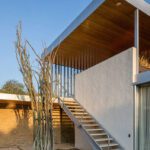
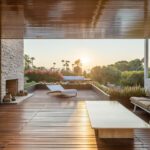
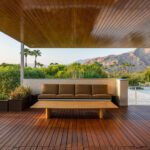

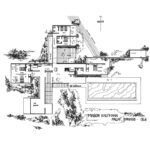
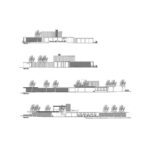
About Richard Neutra
Richard Neutra (1892-1970) was an influential Austrian-American architect who became one of the key figures in the modernist architecture movement. Born in Vienna, Austria, he studied under Adolf Loos at the Vienna University of Technology. He later moved to the United States in 1923, where he worked briefly for Frank Lloyd Wright before establishing his own practice in Los Angeles.
Neutra’s work is characterized by its seamless integration of technology, open floor plans, and close attention to the relationship between the built environment and its natural surroundings. His designs promoted the health and well-being of the occupants, a philosophy he termed “biorealism.”
Notes & Additional Credits
- Richard Neutra: Complete Works by Barbara Lamprecht
- The Architecture of Richard Neutra: From International Style to California Modern by Arthur Drexler and Thomas S. Hines
- Fallen Palm: A Portrait of the Kaufmann House by Julius Shulman
- Modernism Rediscovered by Julius Shulman and Pierluigi Serraino

